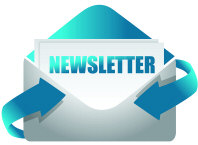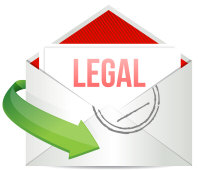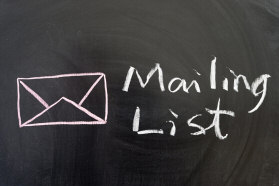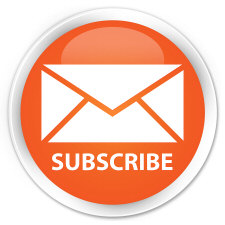Tips and Strategies For Effective Email Marketing
 Introduction Introduction
When marketers refer to the format of an email, it means that the layout, the
content, and the purpose of a particular email work together visually and
functionally as a unit. For example, a newsletter is an email format. So is a
promotion, an event invitation, and a holiday greeting.
Email Formats
This article is going to explain the email formats that you can choose from to
run a successful email marketing strategy. It is important to use a variety of
email formats in your strategy for two reasons. First, people respond to
different formats in different ways. For example, many people wait to read an
email that looks like a newsletter, while an email that looks like an urgent
announcement is more likely to get immediate attention.
While getting immediate attention from every email might sound like a good
strategy, the reality is that urgency wears off if you use the same email
formats for all your communications. Which brings me to the second reason to use
a variety of formats; you need as many formats as you have reasons to
communicate. For example, if you send promotions, event invitations, news,
information, greetings, and appointment confirmations You should utilize enough
email formats to appropriately categorize your information into logical
groupings.
Email Newsletters
 Now, here are the most popular email formats and some tips for making them
effective. Email newsletters are typically focused on information rather than
promotion. Newsletters can have columns to give them the appearance of a paper
newsletter and are great for sending loosely related information in a single
email. Newsletters also should have a periodic frequency, such as weekly or
monthly, rather than an event or date driven frequency. For best results,
minimize the amount of promotional content in your email newsletters. No more
than 20% of your email newsletter content should contain promotions. If you need
to promote more than that, use a promotional email format. Now, here are the most popular email formats and some tips for making them
effective. Email newsletters are typically focused on information rather than
promotion. Newsletters can have columns to give them the appearance of a paper
newsletter and are great for sending loosely related information in a single
email. Newsletters also should have a periodic frequency, such as weekly or
monthly, rather than an event or date driven frequency. For best results,
minimize the amount of promotional content in your email newsletters. No more
than 20% of your email newsletter content should contain promotions. If you need
to promote more than that, use a promotional email format.
Promotional Email
Promotional email should focus on a single promotion, such as a single product,
a group of related products, or a theme such as a sale. Promotional emails are
usually date driven or they are triggered by specific actions, such as a recent
purchase or an inquiry. When using promotional emails, it is best to put some
but not all of the details about the promotion in the email itself. Put the rest
of the details on a website to invite a click so that you know how many people
were interested in learning more about the promotion.
Event Invitation
Another type of promotion is an event invitation. Event invitations can focus on
one event or a series of events. Events are highly date driven and usually
require a series of emails in similar formats to get a good overall response.
Make sure you plan out your event invitations on a calendar to avoid
over-communicating. An email announcement is a format that's sent when no
specific response is expected on the part of the recipient. Examples include
greetings, thank you messages, press releases, and order confirmations.
Send these email formats when you want to focus on relationship building
instead of generating immediate sales or leads. Sometimes it's nice to receive
an email that doesn't ask you to do anything. Email formats are most effective
when your email designs and layouts are a good match.
Be An Appreciated Email Sender
There are laws against unsolicited email or spam because people hate it. Since
hate is not a buying emotion and the government makes the rules, here is what
you need to know to become an appreciated email sender.
The Laws
 Now, what I am about to say is not legal advice in any way, shape, or form. It
is just a summary of possible issues. Use a licensed attorney to make sure you
follow the law when it comes to email marketing. And the main law governing
commercial email is known as the CAN-SPAM Act. You should read and comply with
all parts of the CAN-SPAM Act, but here are the major guidelines. Now, what I am about to say is not legal advice in any way, shape, or form. It
is just a summary of possible issues. Use a licensed attorney to make sure you
follow the law when it comes to email marketing. And the main law governing
commercial email is known as the CAN-SPAM Act. You should read and comply with
all parts of the CAN-SPAM Act, but here are the major guidelines.
First and foremost, you need a relationship of affirmative consent between
your business and anyone to whom you send a marketing email. You also need to
provide a simple and free way for your subscribers to opt out of receiving
future emails. The industry standard is one or two clicks to unsubscribe. Also,
make sure the information in your email is true and accurate. You are not
allowed to fake your from line, use misleading subject lines, or send emails
from a false email address.
Finally, make sure you include your physical business address in every email.
A post office box is okay. Keeping your emails legally compliant will keep you
out of trouble with the government, but your job as an email marketer is not to
make the government happy; your emails need to impress prospects and customers.
Tips For Effective Email
Here are three tips to make sure your email marketing is well-received and
appreciated by your subscribers.
First, ask for explicit permission before sending marketing emails. Second,
ask your subscribers to share their preferences when they join your email list
and send only the information your subscriber’s request. Third, make sure that
you send emails with the proper frequency and relevance. In general, people will
tolerate almost any email frequency as long as your email content is valuable
and relevant.
For example, weather is a daily occurrence, so weather information is likely
to be appreciated on a daily frequency. If you send a daily email asking people
to buy something however, you should better be pretty sure that your subscribers
are interested in daily deals.
Building Your Email List
 Email marketing without permission can spell disaster for your marketing emails.
You cannot legally send emails to total strangers and even if you could, you
would not make very many people happy by sending emails they did not ask for. Email marketing without permission can spell disaster for your marketing emails.
You cannot legally send emails to total strangers and even if you could, you
would not make very many people happy by sending emails they did not ask for.
Therefore, an email list without permission is not very valuable. However,
when an email list includes the email addresses of prospects and customers who
have explicitly asked your business to send them emails to stay informed, you
have a very valuable asset for your marketing strategy. In this part of the
article I am going to show you how to include permission in your email marketing
plans so that your email list is full of people who want to receive your emails.
Permission Levels – Implied Permission
The first step in the process of building a permission-based email list is
deciding on a permission level. Now, there are three basic types of permission.
The lowest permission level is implied permission. For example, when someone
hands you a business card and says let's stay in touch, you could assume that
means sending a few emails. But be extra careful with implied permission,
because people may be unpleasantly surprised if you start sending marketing
emails without first confirming the content and the frequency of those emails.
It is a good idea in the case of implied permission to send an email
confirming your decision to add someone to your email list and include a link
for opting out if you're new implied subscriber does not want to be on your
marketing email list.
Explicit Permission On
The second permission level is explicit permission. For example, when someone
fills out an online form to join your email list, that person has given you
explicit permission to send the emails your email sign-up form specifies.
Explicit permission is the industry standard for email marketing and the
recommended level of permission for most email marketing providers.
Confirmed Permission
The third permission level is confirmed permission, also known as double
opt-in. Confirmed permission works like this: when someone explicitly opts in to
your email list, you send an email asking the new subscriber to confirm their
decision to join the list. Usually this happens by clicking a link or replying
to the confirmation email with a specific message.
Confirmed permission ensures that your email list subscribers are highly
interested in receiving your emails and confirming permission generally improves
your delivery rates too.
Staying Out Of Trouble
Now let's go over a few forms of permission that actually have the potential
to get you in trouble. You should avoid building your email list based on
someone else's permission. For example, do not send marketing emails to people
on email lists belonging to your vendors, your colleagues, your partners, or
trade organizations. If you want to reach people on other email lists, ask the
owner of the list to send the emails to their list on your behalf and ask them
to explicitly opt in to your email list.
Some email lists are sold or leased out by list brokers and permission-based
quality is very important if you decide to use a broker to send your emails. If
you decide to use a list broker anyway, make sure the list broker you use is
completely compliant with all laws and industry best practices. Since your email
list is valuable, protect it like an asset. Do not share your email list with
anyone and do not violate your permission standards by sending emails your
subscribers did not sign up for.
Gathering Information
 In this section of the article I show you how to collect email addresses to
build your email list. Now, when it comes to actually collecting emails, there
are five basic ways to ask people to join your email list. The first way to
collect email addresses is by providing an online sign-up form to your website
visitors. You should put the sign-up form or a link to the sign-up form on every
page of your website, not just the homepage, because you never know when someone
will enter your website or exit your website. In this section of the article I show you how to collect email addresses to
build your email list. Now, when it comes to actually collecting emails, there
are five basic ways to ask people to join your email list. The first way to
collect email addresses is by providing an online sign-up form to your website
visitors. You should put the sign-up form or a link to the sign-up form on every
page of your website, not just the homepage, because you never know when someone
will enter your website or exit your website.
The second way to collect email addresses is to collect email addresses from
people in person. When someone calls your business on the phone, ask if he or
she would like to join the email list to receive information about the topic of
the call. When you attend networking events or trade shows and when you meet
people for appointments, ask everyone to join your email list. I call it the 5
Foot Rule. If someone is within 5 feet of you, ask for his or her email address.
Thirdly, all printed marketing materials should describe a way to join your
email list. You can provide a sign-up form by asking people to write their
information directly on the form, and you can use printed advertising to promote
other methods of joining, which brings me to the fourth way to collect email
addresses: mobile devices. You can ask people to scan a mobile bar-code,
You can also ask people to text their email address to join, and you can
provide mobile sign-up forms that can be filled out on a smart-phone or a tablet
device. You can use mobile devices for collecting addresses in person as well.
Simply hand your device to someone so he or she can fill out a form on the
screen. The fifth way to collect email addresses is through social media
networks.
Place sign-up links to your email sign- up form on all social media sites you
own and promote your email list in your social posts. Some social sites such as
Facebook allow application plug-ins, so you can embed forms directly into your
page.
Email Alone Is Not Enough
Remember that an email address is more effective when you combine it with
other information. You may want to collect a first name for personalizing your
emails or a ZIP code for targeting local offers. But do not ask for too much
information the first time you sign up or you will reduce sign-ups. You can also
ask for additional information once you have established a relationship of trust
with the members of your email list.
Incentives To Increase Sign-Ups
 It is a common misconception that people are not willing to share their email
addresses. Actually, they are willing to share. You just have to communicate the
value of your email list effectively. The idea is to exchange value for
information. The more valuable your emails, the more people will sign up to
receive that value. It is a common misconception that people are not willing to share their email
addresses. Actually, they are willing to share. You just have to communicate the
value of your email list effectively. The idea is to exchange value for
information. The more valuable your emails, the more people will sign up to
receive that value.
Now, there are three basic ways you can maximize the value of subscribing to
your email lists. The first way is to make the information you put in your
emails valuable. For example, a consultant could offer free advice via his or
her email newsletter. You can also give your subscribers immediate incentives
for joining the email list. Immediate incentives are usually provided to
subscribers in the form of an automated email sent to the email address used for
the subscription.
Use your automated emails to send a coupon or discount, a valuable download,
access to a special video, a free product or service, or anything else that has
immediate benefit to the new subscriber.
For the best results, offer something related to your products or services as
opposed to offering a free gift unrelated to your core business. That way you
will gain a prospect who is just as interested in what your business is as what
you are giving away.
For example, a restaurant could offer a free dessert to anyone who joins the
email list by sending a coupon to everyone who subscribes. In addition to
immediate incentives, you can also offer the same benefits in the future. The
benefit of future incentives is the fact that you can send new subscribers a few
emails before they receive the incentive.
Conclusion
I have gone over some of the fundamental reasons as to how effective email
can be. There of course is a number of steps that you need to be wary of especially
that of seeking permission. The only way to actually have an effective campaign
is to actually start. Start off small, test the response, make changes and see
what happens. But remember, just like many other things, with email marketing
you need to keep your audience engaged so they can look forward to receiving
your next email.
Web Marketing
Creating a Newsletter that Produces Impressive Results!
How To Legitimately Get Images For a Website?
Landing Pages – Converting Clicks to Leads
How To Increase Your Adsense Income
Effective Email Marketing
Things to Consider Before Selling Products Online
Tips for Setting Up an E-commerce Site
Exploring Keywords And Google Bombs
How to Write Great PPC Ads
Understanding Google's PPC Auction Model
How Bot Malware Activity Can Harm Your Website
How To Make Static HTML Templates Using Include Files
Learn Why This Website Uses Static HTML Over a CMS
Page Rank & Link Building Tips and Advice
Top 10 Tips to Improve your SEO Skills
How to Choose Good Affiliate Programs to Make Money Online?
How Long It Takes to Make Money Online from Blogging
How to Make Money Online from Affiliate Marketing
Make Money from Your Website Using Online Ads
How to Setup a New Online Store?
What are the Benefits of Article Marketing?
Will Google ban your site for duplicate content?
How to effectively cloak Clickbank Hop links
Better AdSense Placement for more Clicks
Affiliates or AdSense, What earns more MONEY?
Kill Your Day Job With Internet Marketing
How Effective Business Blogging Is for Business Owners?
Why Register A Domain Name?
What are the Benefits of Internet Advertising?
What is SEO and Why SEO is So Important? |